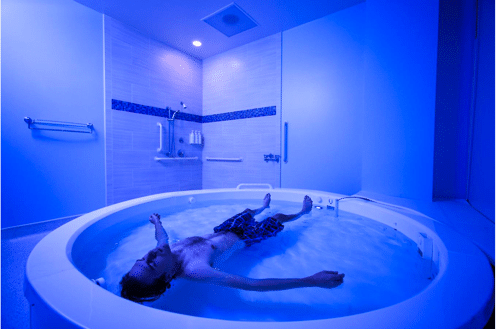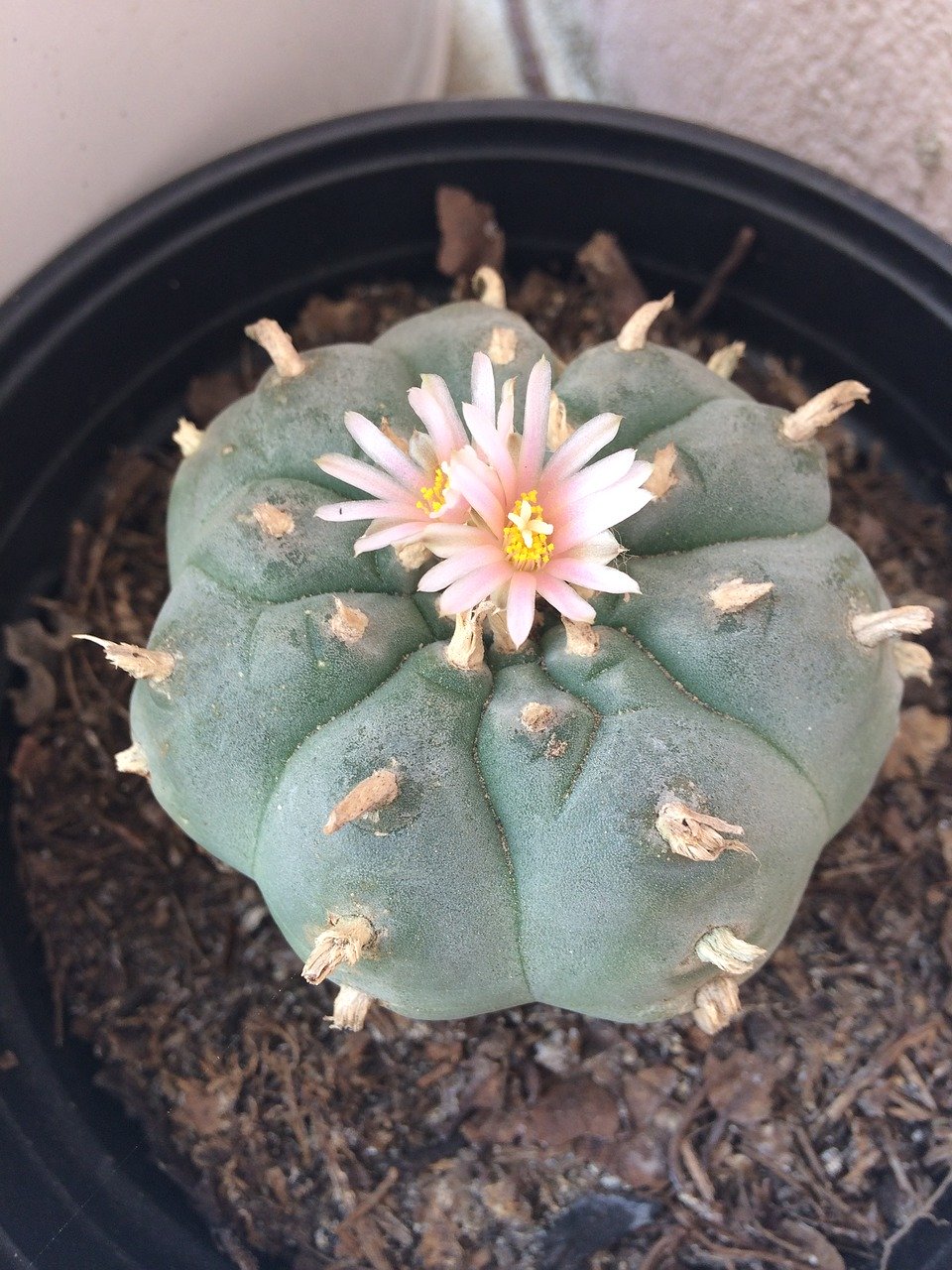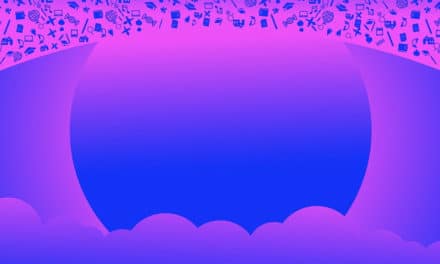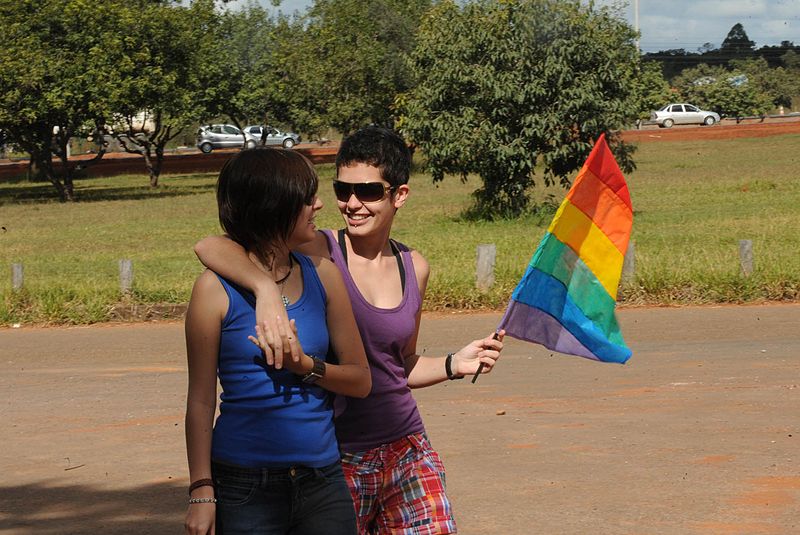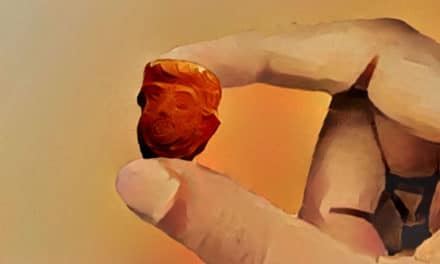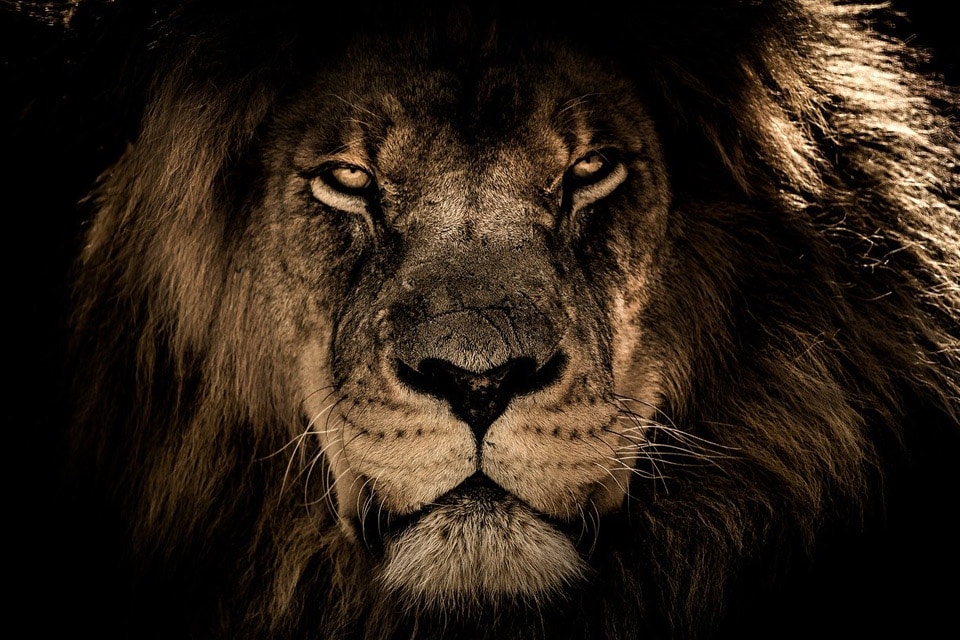
I’ll start off by letting you know that I’m in my first year of grad school to become a therapist, so I’m not an expert on therapeutic concerns. I’ll also let you know that this piece will not be a scientific inquiry. It will be what folks call an anecdotal report, which is to say it’s my personal experience—meaning scientific materialists would toss it in the fire. So don’t go citing this as “evidence” or any of that mumbo-jumbo. I’m simply interested in sharing my experiences of using a float tank over the last few months to stop my cycles of addiction and, more recently, to integrate a powerful experience with peyote.
A Brief History of Flotation Therapy
I’ll start with a people’s history of float tanks. Float tanks—aka isolation tanks, or sensory-deprivation tanks—were first developed in 1954 by John C. Lilly, who is basically the prototypical mad scientist psychonaut innovator. Lilly was fascinated with consciousness, and he wanted to study what happened to consciousness when sensory input was eliminated. Was there a way to experience “pure” consciousness? Could eliminating sensory input incite universal wisdom?
Lilly ascribed no limits to the potential reaches of consciousness. Not only did he regularly enter the tank and jack himself up with ketamine, gradually becoming convinced he was communicating with the Earth Coincidence Control Office (ECCO), an alien organization which determined all earthly behavior, but he proceeded to conduct experiments attempting to communicate with dolphins in order to understand the world through the lens of another highly-evolved species. (Fun Fact: The 1995 Sega Genesis game Ecco the Dolphin, whose titular dolphin fights “extraterrestrial threats,” drew inspiration from old Lilly.) Whether or not Lilly achieved interspecies communication is a point of debate; nevertheless, the work is intriguing, and it directly led to the United States Navy Marine Mammal Program (NMMP), where Americans did what they do best and weaponized the shit outta those dolphins.
So that’s how float tanks came to be. Lilly was pals with fellow psychonauts Timothy Leary and Allen Ginsberg, and float tanks were a novel apparatus that fascinated scientists and lay-people alike, especially once Glenn Perry created a commercially available model in 1972. In the early 1980s, a fair bit of research was done on their therapeutic benefits and showed efficacious results for alcohol and smoking addictions, as well as positive behavioral change and improved athletic performance. However, as that psychedelic wave crashed and faded into AIDS paranoia, float tanks drifted into obscurity, largely remaining a relic of collective memory.
Then along came a tatted-up-UFC-commentator-comedian-reality-show-host named Joe Rogan. Joe Rogan created a platform in 2009, a podcast that allowed him to discuss the things he loved most: weed, fighting, DMT, weed, Hunter S. Thompson and floating. Rogan spoke about how his personal flotation tank helped him with countless concerns and argued that the practice can benefit everyone. And since Rogan’s podcast experiment sorta caught on, floating sorta caught on again, too.
Now in 2020, centers for “flotation therapy” can be found in countless cities around the globe. Each center offers sensory-deprivation floats that typically range from 60-120 minutes, advertising numerous benefits (often ungrounded in dang material science) including enhanced creativity, hormone regulation, and profound relaxation from tuning out the world and sinking into a bed of water more salt-dense than the Dead Sea.
Given the fact that floating isn’t cheap, and I’m in graduate school, I took the only route I could conceive of to bring floating into my life: I got a job at a float center. For the last few months, I’ve floated 2-4 times a week, and I have discovered past any point of personal doubt that a regular practice, as advertised, allows for a kind of progressive healing not only of bodily pains, but also of matters of the spirit. And as the title suggests, I’m finding it to be an incredible tool for psychedelic integration.
Psychedelic Integration and Addiction
Psychedelic integration refers to the process of “bringing down” the insights of a psychedelic experience and integrating them into the day-to-day. When experiences are particularly powerful and mind-blowing, this process becomes difficult, because the insights may not be clear; it’s possible you’ll emerge from your experience more confused than before. Having a trained and trusted therapist, guide or shaman can mitigate the potential for harm suffered through the confusion, and interpersonal support in some form appears to be essential for effective integration. Also helpful is a mindfulness practice, which I am experiencing through floating.
I’ve experienced several powerful psychedelic journeys on several psychedelic substances. It’s been challenging to integrate the insights received—I mean, what do I do with terrifying abstract visions of intergenerational trauma brought on by a seismic dose of mushrooms? It’s become clear by now that integration takes work and dedication; it’s no passive enterprise. And so, when I decided to embrace a recent opportunity to experience peyote, a medicine I’d been interested in for over a decade, I knew I’d have to step up my integration game, especially since I was approaching it for help in my struggle with addiction.
In short, in late 2019, I found myself following a near-daily regimen of 30-40 mg of Adderall, several cups of coffee, post-work cannabis, and alcohol before bedtime while staring at a screen. I never meditated, even though it was daily homework. Every moment of every day was Do! Do! Do! unless I was at my shitty job, when it was speed it up! get through! My heart hurt every day. I felt irritable, impatient and obsessed on getting somewhere other than here. Some days, I’d add a microdose of LSD, maybe gulp down some kratom for body euphoria. Other times, I’d be wide awake at 2 am, and I’d take Xanax left over from an old prescription when I felt too terrified to function. Some nights I’d think about all I’d taken, and couldn’t even keep track of it all.
Then in early 2020, something happened during a trip to New Orleans with some old pals. I can’t provide details, because it’s still too recent and voodoo-like to understand. But the city presented me with a whole lot of ugly mirrors, and I saw how distanced from myself I’d become, how I was pushing away those I loved most. The only option was to cut the substances cold turkey—and I took the job at the float center to support this painful process.
So when peyote presented itself, I decided to approach with intention to learn more about the suffering at the root of these cycles. Then, I’d use the float tank to integrate what I received and to keep me on track to heal.
Peyote Visions
I took peyote during a Half-Moon Ceremony facilitated through the Native American Church. These ceremonies involve participants sitting up throughout the night. My body experienced tremendous pain and stiffness; I constantly fought the urge to lie down. The medicine tasted bitter and revolting, and I wanted to puke. Unlike ayahuasca, however, where purging is encouraged, our facilitator encouraged us to keep the medicine down. She said, “Ask the spirits for strength, and they will give it to you.” I did, and sensed that I was being held, that there was wisdom in enduring the struggle.
What transpired was hours upon hours of physical and emotional pain that transmuted into visions coalescing into the most life-affirming strength and power I have ever known. It was not power in an egoic sense; it was power of the Universe itself, which medicine reminded me, lived inside me.
This insight came through a vision from The Lion King—yeah, the Disney cartoon. Toward the film’s climax, Simba experiences a Dark Night of the Soul, too overcome with guilt and shame over his father’s death to return home. Rafiki, the shaman baboon, informs him that his father is still alive and points at a lake, but Simba sees only his pained reflection in the water. But as Rafiki touches the water, Simba’s reflection transforms into his father, Mufasa.
“He lives in you,” Rafiki says, and in the clouds, Mufasa emerges and speaks in a mighty voice: “Simbaaaa… You have forgotten me.”
“No!” cries Simba. “How could I?”
“You have forgotten who you are, and so forgotten me. You are more than you have become.”
Let me break for a moment and share that I’m crying as I’m writing this. I never cried watching this scene, but when it struck me amidst the intense peyote experience, I wept.
I wept because Simba is me—or, more accurately, Simba is my ego. He has strength within him, but he has turned away from it, because he is addicted to his narratives of guilt and shame. He lives in fear, and in his fear, he refuses responsibility. As he refuses, the world suffers, for evil is left to reign. For my entire life, I have played into my self-defeating narratives—my fear, my shame, my unworthiness. Who am I to be powerful? I’m nobody. I have no voice.
“Yes, you do,” the peyote medicine told me. “Your voice speaks to the human experience, and your experience must be shared. Feel into this strength, for it is a gift the world needs.” I felt connected to the land and sky, capable of accomplishing so much more than I’ve ever known.
This strength I deny is symbolized through Mufasa. It lives in me, as it lives in everyone. We fear it, but without it, we resist our nature. The world needs our power; otherwise, we float along in apathy as the hands of evil mechanize destruction. Or, in more personal terms, I need my strength, lest my cycles of addiction control me.
As these duty-focused messages came, I noticed that my physical pain had lessened. I sat in a space of loving acceptance for all that is and all I am. I did not feel the isolation of Simba; I felt cradled in universal, motherly arms and knew the ultimate source of power is, and always will be, love.
Floating Into New Narratives
Now I’m back in the default world, feeling my self-defeating narratives, my desire to alter my consciousness. Yet when I meditate on Mufasa in the clouds, the tears return, and I feel connected to that power within.
It’s not enough just to think, “Mufasa!” It’s not enough just to rewatch that scene. To integrate the other-dimensional wisdom offered by peyote, I have to deepen into the image and let it fill me. That’s where the float tank comes in.
In the float tank, the sensory world vanishes. As my body relaxes, so does my mind. I lie comfortably on the bed of water, and I perceive my self-conscious narratives. Without stimuli to enhance them, I am better equipped to get “outside” them. My mind softens into a dream-like state, and I enter a space ripe for visualization. I feel strength as I hear Mufasa’s voice rumble through my body. Rafiki reminds me: “He lives in you.” The peyote wisdom is not gone. It is here forever, so long as I have the courage and discipline to remember. I allow that wisdom to move through my body and mind, and I breathe calmly, allowing my heart to open.
That wisdom reminds me that my addictive cycles are my forgetting, my turning away from my authentic nature. My addictive cycles are my fear that I am not enough, my bandages for the endless wound of shame unrecognized. So many of the situations I turn toward substances to resolve are actually fueled by the substances themselves. In the words of the great David Foster Wallace, “What looks like the cage’s exit is actually the bars of the cage.”
Addiction as a whole is far more complex than the picture I’ve painted. But I’m convinced that feeling power and confidence from a source beyond ourselves can help anyone break addictive cycles and find “home” inside their bodies. I feel that power through the medium of stories, and plant medicine like peyote grants me access to a space where stories are as real as anything I’ve ever touched or smelled.
Stories and myths condense meaning and value into images and moments that teach us how to be human. As wild as our world is today, there are recurring truths that are as relevant as ever—heck, due to the crazy confusion of these times, many would argue that they’re more relevant than ever before. Whether we tap into Babylonian myths, Disney fables, or neither, our minds are continually narrating the stories of our lives, and we have far more agency over those story beats than we typically realize. Even if you don’t have a float tank at the ready, you can always create space to hear your stories, revise them, and tell a new tale, no matter how ingrained your familiar narrative may seem. Please remember that you always hold the pen, and the world is begging you to start writing.

